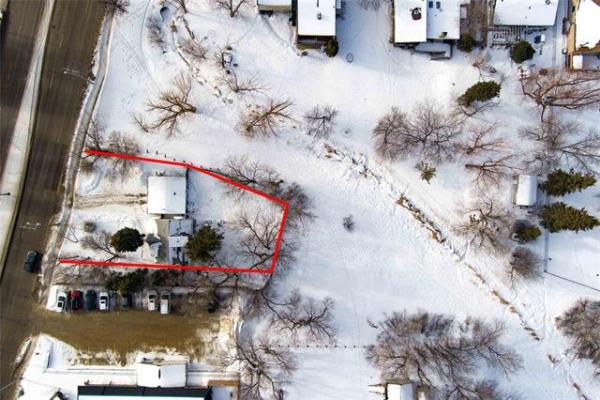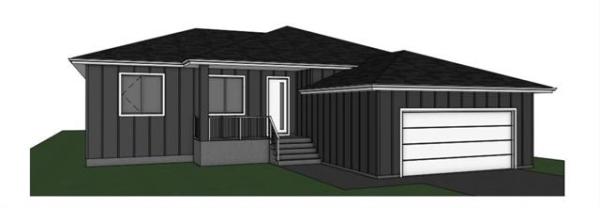Question:
We bought a house in May and were informed there had been an ice dam last winter, which caused some leaking inside the house. This corner now has peeling paint, and when we repaint, it soon peels again. What can we do to remedy this? Do we need to open the wall to make sure it is dry?
Bruno Klassen
Answer:
While it may be a little premature to be addressing this issue this early in the winter, there is a chance any ice dams that have already occurred could melt and leak inside during a mid-season thaw. Taking action now may prevent a recurrence and allow you to successfully paint, once the weather warms up.
Typical ice damming, normally at the eaves, is due to a combination of factors. The first one, which may be the most recognizable to most homeowners, is the amount of snow on the roof. The snow on the roof provides the raw material for this phenomenon. Ice dams are caused by melted snow, which runs down the roof underneath the snowpack and freezes at or near the eaves. If there is no snow on the roof, there is no likelihood of any ice damming. So the first thing to attempt in preventing this from occurring is to remove any excess snow from the roof. This may only be safely accomplished with a plastic shovel on a bungalow with a moderate to low pitch, but can also be attempted on other roofs from the ground with a proper roof rake, designed for this purpose. Removing excess snow will help minimize the size of the ice dam but will not get at the root causes.
Other variables in the creation of these winter nuisances are the pitch of the roof and the direction they face. Very low sloped roofs have a much higher rate of ice damming for a couple of reasons. The most obvious one is that flatter roofs will drain more poorly and will be subject to thicker snow accumulations. The other reason is low-slope roofs typically have less airspace between the top of any insulation and the underside of the roof deck. This makes them warmer and more difficult to properly ventilate. Very steep roofs are also more prone to ice damming, simply because they often have long valleys, with small eavestroughs at the bottom. These troughs and downspouts can become overwhelmed with melted snow. This water will then accumulate at the colder area at the bottom of the valley and can cause substantial icicles and dams. This is the style of roof that may benefit the most from frequent snow removal.
While the above factors may contribute to the size of the ice-damming problem, they are not the main issue to address. The main cause of ice damming is warm air and heat escaping the living space into poorly insulated and ventilated attics. This warm air can cause the temperature of the roof sheathing in the attic to rise above freezing, even on the coldest days. As this heat transfers through the sheathing and roofing, it may be enough to melt the underside of the snow accumulated on the roof. This will be exacerbated on very sunny days, where the heat from the sun will cause the snow to warm further, increasing the amount of melting. Once the sun sets and the temperature inside and outside the attic drops, this water will freeze, creating the ice dam. This may go on day after day until the weather warms up consistently enough to cause the ice itself to melt, often causing leakage inside the home.
Before attempting to repair any damaged paint in the corner of the room where the effects of the ice damming are seen, you must make an attempt to minimize the warm-air leakage that is causing the issue. This may include opening up the walls to see what damage has been done in the past, but the main area to address is the ceiling and attic above. Due to normal air movement in your home, the ceiling is the area where most warm air will leak through the building envelope. Preventing this is a combination of establishing a good air/vapour barrier and having sufficient thermal protection and adequate ventilation in the attic space above. There are methods of establishing both a high insulation level and a good air/vapour barrier, but accessing the area where the problem is occurring is the key to remediation.
Getting into the attic space above the area where the leakage from the ice dam is causing problems will help identify where the defects lie. Hiring a knowledgeable insulation contractor or a building-envelope specialist to inspect the home and attic should be the first step. They should be able to provide you with a solution, which may incorporate blowing in high-density polyurethane foam insulation, upgrading with more conventional cellulose fibre insulation, or other approaches to minimize warm air leakage into this area. Once you have implemented their recommendations, repairs to the damaged paint can take place. In some cases, it may be easier to access and fix the defects above the ceiling by partially removing it, which will allow removal of any damaged or wet materials that are preventing proper adhesion of your paint. Either way, you may have to partially remove the wall and ceiling coverings in the problematic corner to assess the extent of the damage before going further.
While it may seem like the peeling paint is a superficial issue in the corner of the room where the problem is showing up, the real culprits are above and outside this area. Improving the air sealing, insulation and ventilation in the attic should prevent further ice damming and leakage, allowing the wall to dry out or be properly repaired so a proper cosmetic fix can be done.
Ari Marantz is the owner of Trained Eye Home Inspection Ltd. and the past president of the Canadian Association of Home & Property Inspectors -- Manitoba (cahpi.mb.ca). Questions can be emailed to the address below. Ari can be reached at 204-291-5358 or check out his website at trainedeye.ca.
trainedeye@iname.com



